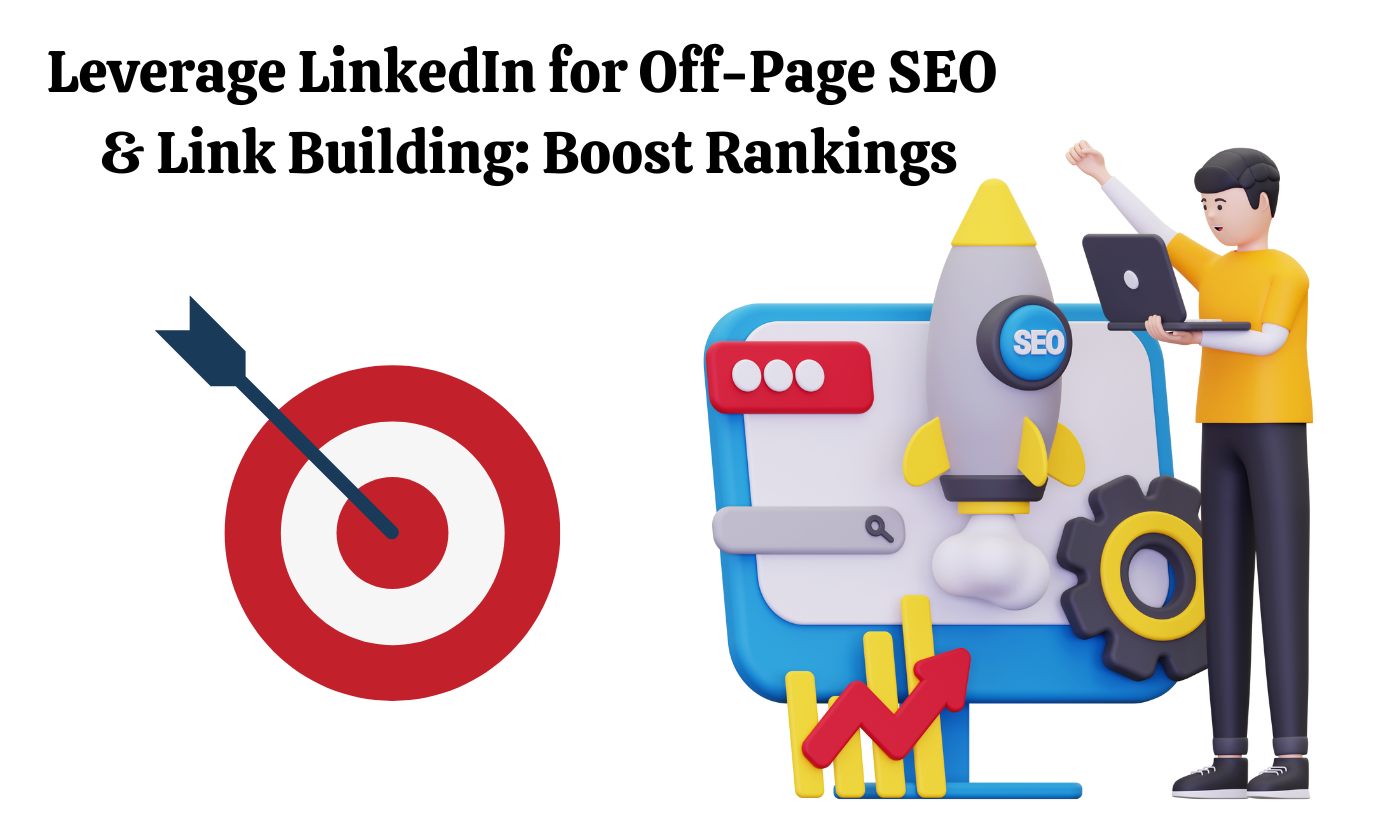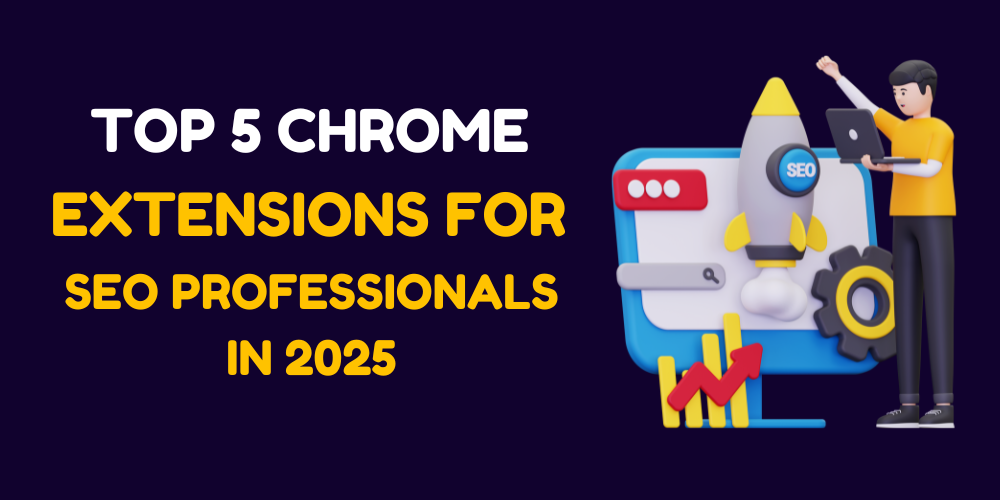How to Leverage LinkedIn for Off-Page SEO and Link Building
When it comes to off-page SEO and link building, most businesses focus on traditional strategies like guest blogging and directory submissions. However, LinkedIn is a powerful yet often underutilized platform that can significantly boost your off-page SEO efforts. With over 900 million users, LinkedIn is not just a professional networking site—it’s a goldmine for building authority, earning backlinks, and driving traffic to your website.
In this blog, we’ll explore how to leverage LinkedIn for off-page SEO and link building, why it matters, and actionable strategies to maximize your results.
Why LinkedIn Matters for Off-Page SEO
LinkedIn is more than just a platform for job seekers and recruiters. It’s a valuable tool for businesses and professionals looking to improve their online presence. Here’s why LinkedIn is important for off-page SEO:
- Builds Authority and Trust:
A strong LinkedIn presence establishes your brand as an industry leader, which can improve your credibility with search engines. - Drives Referral Traffic:
Sharing links to your website on LinkedIn can drive targeted traffic, signaling to search engines that your site is valuable. - Encourages Backlinks:
High-quality LinkedIn content can attract attention from bloggers, journalists, and influencers, leading to natural backlinks. - Enhances Social Signals:
While social signals (likes, comments, shares) aren’t direct ranking factors, they contribute to your overall online presence and can indirectly impact SEO.
Now, let’s dive into how to leverage LinkedIn for off-page SEO and link building.
1. Optimize Your LinkedIn Profile
Your LinkedIn profile is the foundation of your presence on the platform. A well-optimized profile can attract more connections and drive traffic to your website.
How to Optimize Your Profile:
- Use a Professional Headline: Include keywords and a clear description of your role or expertise.
- Write a Compelling Summary: Highlight your skills, experience, and value proposition. Include a link to your website.
- Add a Profile Photo and Banner: Use a professional headshot and a branded banner image.
- Include Links to Your Website: Add your website URL to your profile and customize the anchor text (e.g., “Visit My Portfolio”).
Example Headline:
“Digital Marketing Specialist | Helping Businesses Grow with SEO and Content Strategy”
2. Create and Share High-Quality Content
Content is king on LinkedIn, just like on other platforms. Sharing valuable content can drive engagement, attract followers, and earn backlinks.
Types of Content to Share:
- Blog posts and articles
- Infographics and visuals
- Videos and tutorials
- Industry insights and trends
Example:
If you’re a marketing professional, share a blog post about “Top SEO Trends for 2023” and include a link to your website.
3. Publish Articles on LinkedIn
LinkedIn’s publishing platform allows you to write long-form articles that showcase your expertise. These articles can drive traffic and earn backlinks.
How to Write LinkedIn Articles:
- Choose topics relevant to your industry and audience.
- Include keywords naturally in the title and body.
- Add internal links to your website or blog.
- End with a call-to-action (e.g., “Visit my website for more tips!”).
Example Article Title:
“5 Proven Strategies to Boost Your Website Traffic with Off-Page SEO”
4. Engage with Your Network
Engagement is key to building relationships and increasing visibility on LinkedIn. The more you interact with others, the more likely they are to engage with your content and share your links.
How to Engage with Your Network:
- Comment on posts from connections and industry leaders.
- Share valuable content from others in your network.
- Join LinkedIn groups and participate in discussions.
Example:
If someone shares a post about SEO trends, leave a thoughtful comment like, “Great insights! I’ve found that leveraging LinkedIn for off-page SEO has been particularly effective. Here’s a link to my latest article on the topic: [Your Link].”
5. Leverage LinkedIn Groups
LinkedIn groups are a great way to connect with like-minded professionals and share your content.
How to Use LinkedIn Groups:
- Join groups relevant to your industry or niche.
- Share valuable content and participate in discussions.
- Avoid spamming—focus on providing value.
Example:
If you’re in the digital marketing industry, join groups like “SEO Experts Worldwide” and share your latest blog post on off-page SEO strategies.
6. Collaborate with Influencers and Industry Leaders
Partnering with LinkedIn influencers and industry leaders can amplify your reach and drive more traffic to your website.
How to Collaborate:
- Identify influencers in your niche with a strong LinkedIn presence.
- Reach out with a personalized pitch offering value (e.g., co-authoring an article or hosting a webinar).
- Ask them to share your content or link to your website.
Example:
If you’re a business consultant, collaborate with an industry leader to write an article about “The Future of Business Strategy” and include a link to your website.
7. Use LinkedIn Ads
LinkedIn Ads can help you reach a larger audience and drive targeted traffic to your website.
How to Use LinkedIn Ads:
- Promote your best-performing content or lead magnets.
- Use targeting options to reach your ideal audience (e.g., job title, industry, location).
- Include a clear call-to-action (e.g., “Download our free guide!”).
Example:
Run a LinkedIn ad promoting a free eBook on “Advanced SEO Strategies” and link to a landing page on your website.
8. Monitor and Analyze Performance
Regularly tracking your LinkedIn performance helps you understand what’s working and identify areas for improvement.
Metrics to Monitor:
- Engagement rate (likes, comments, shares)
- Click-through rate (CTR) on links
- Referral traffic from LinkedIn
- Follower growth
Tools to Use:
- LinkedIn Analytics
- Google Analytics to track referral traffic.
- Third-party tools like Hootsuite or Buffer for scheduling and reporting.
Common Mistakes to Avoid
- Ignoring Engagement:
LinkedIn is about building relationships, not just broadcasting content. Engage with your network to build trust and loyalty. - Focusing Only on Followers:
While follower count is important, engagement and traffic are more critical for off-page SEO. - Over-Promoting Your Content:
Avoid spamming your connections with links. Focus on providing value and building relationships. - Neglecting Analytics:
Tracking performance helps you refine your strategy and maximize results.
LinkedIn is a powerful platform for off-page SEO and link building that can drive traffic, build authority, and grow your professional network. By optimizing your profile, sharing high-quality content, and engaging with your network, you can maximize the impact of your LinkedIn strategy.
Remember, LinkedIn is not just a networking platform—it’s a tool for building relationships and establishing your brand as an industry leader. Start implementing these tips today to boost your off-page SEO and grow your online presence with LinkedIn!




